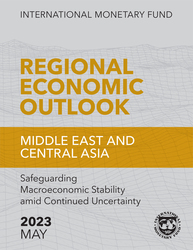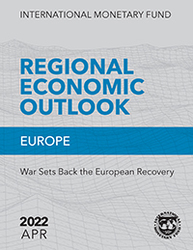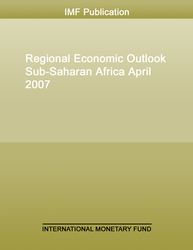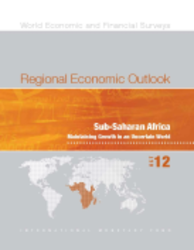
Regional Economic Outlook: Middle East and Central Asia, May 2023: Safeguarding Macroeconomic Stability amid Continued Uncertainty.
Regional Economic Outlook for the Middle East and Central Asia, May 2023
READ MORE...
Publication date: May 2023
ISBN: 9798400238239
$20.00
Add to Cart by clicking price of the language and format you'd like to purchase
Available Languages and Formats
| Arabic | |||
| English | |||
| French | |||
| Russian |
Prices in red indicate formats that are not yet available but are forthcoming.
Topics covered in this book
This title contains information about the following subjects.
Click on a subject if you would like to see other titles with the same subjects.
Economics- Macroeconomics , International - Economics , Growth outlook , monetary tightening , inflation , downside risks , financial stability concerns , policy priorities , debt sustainability , structural reforms
Summary
The economies of the Middle East and Central Asia proved resilient in 2022, despite a series of global shocks. However, this year—and potentially next—growth is expected to slow in the Middle East and North Africa as tight policies to fight inflation, reduce vulnerabilities, and rebuild buffers start to dent economic activity in many countries, and agreed oil production cuts curb growth in oil exporters. Inflation is projected to remain persistent. The outlook for Caucasus and Central Asia countries depends heavily on external factors, namely the impact of monetary tightening, and growth in their main trading partners, the pace of private transfers, and inflows of migrants from Russia. Uncertainty is high, and risks to the baseline are tilted to the downside amid financial stability concerns, particularly in advanced economies amid contagion fears. Policy trade-offs are even more complex, and policymakers will need to calibrate the policy mix carefully to reduce core inflation without triggering financial stress and excessive tightening and continue to provide targeted fiscal support to vulnerable groups while preserving debt sustainability and financial stability. Tight monetary and fiscal policies across the region amid tight global financial conditions call for accelerating structural reforms to bolster potential growth and enhance resilience.
Copyright © 2010 - 2025
Powered by:
AIDC



